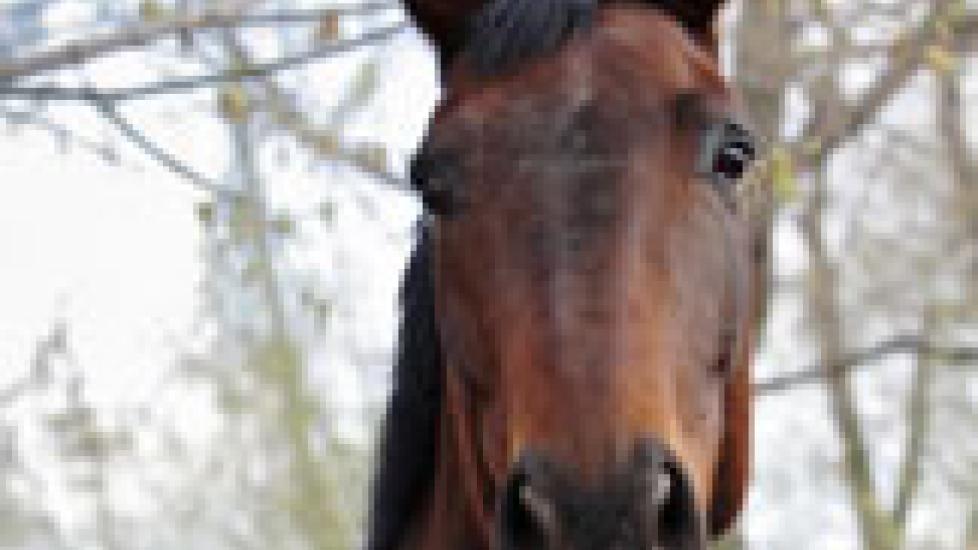Behind the Scenes of Equine Surgery
This week I’d like to give you a behind-the-scenes look at what goes on during surgery on a horse. And I’m not talking the run-of-the-mill castrations and lacerations that I do on the farm. I’m talking in clinics, with the horse on his back, usually in colic surgery where the abdomen is entered to fix a twisted or blocked gut. Ready? Scrub up, put your surgical cap, gown, and gloves on — here we go!
The two most formidable aspects about equine abdominal surgery are logistics and equine physiology. We are talking about somehow getting a one thousand pound animal completely anesthetized and on its back, all the while considering that a one thousand pound animal really should not be lying down unconscious for an extended period of time because the lungs will start to deflate under the body’s weight and muscle and nerve damage can occur. Let’s break this down step by step.
Step 1: The horse and anesthesia team are in a padded room. An IV catheter is in the horse’s jugular vein for immediate access to the blood stream.
Step 2: Sedate the horse. No matter if the patient is a horse, dog, or human, you must receive some sort of pre-medication, or “pre-med” before the actual anesthetic. Sedatives help the body transition to the anesthesia, as well as make for a smoother recovery. In other words, sedatives are amazing.
Step 3: Perform a well-choreographed ballet. After the sedative takes effect, the anesthesia is given intravenously. This is the drug that will actually make the horse lie down and it takes effect very quickly. Usually, the horse crumples to the floor. As this happens, a small door is used to press the horse against the wall, so that the horse doesn’t just flop to the ground. Then, a large hoist that’s been hanging above you the entire time comes down. Ropes are placed around the horse’s ankles and the horse is hoisted by his feet up into the air and the surgical table is quickly wheeled beneath him. When the table is in place, the horse is carefully lowered onto the table on his back. V-shaped padded wedges keep the horse propped in position. This is literally a well-choreographed dance since everyone has a job, needs to stay out of each other’s way, and do things quickly, safely, and efficiently.
Step 4: Let’s roll. As the horse gets ready to be wheeled into the operating room (OR), a catheter is placed in an artery on the horse’s face to monitor blood oxygen levels. A gigantic endotracheal tube is placed down the horse’s trachea and the horse is hooked up to a ventilator. Then horse, ventilator, and IV bags are all rolled into the OR.
Step 5: Surgery technicians prep the surgical site. This means shaving the hair, then scrubbing the site to create a sterile field. Drapes are placed over almost the entire horse, excluding only the surgical site. When the horse is prepped, in come the surgeons. Now the OR looks roughly like this: horse still on his back, head extended and connected to ventilator. The legs are bent and the surgeon usually stands at the side of the horse, between the front and back legs. Peeking into this room now, a bystander may not be able to tell there’s a horse under there at all, because he is so completely covered by drapes.
Step 6: Surgery. Colic surgeries are cool and unnerving at the same time. They can last hours, depending on what’s wrong. The ventilator helps inflate the horse’s lungs during surgery, and modern anesthetics decrease the risk of severe muscle inflammation due to prolonged periods of recumbency. But time is still of the essence and there’s a constant unspoken battle between the anesthesiologists and the surgeons: The former wants the patient off the table as quick as possible and the latter wants more time to do his/her thing.
Step 7: Recovery. Once the surgery is finished, the drapes are removed, the horse is rolled on his side, and the surgical table is wheeled into the recovery room. This is another padded room where the horse comes out of anesthesia. This is a critical period, since waking from surgery is a very disorienting experience and some horses come around much more violently than others. No human is allowed in this room for this reason. Some clinics actually recover horses from anesthesia in a large pool to prevent injury. Once the horse is standing and is fairly solid on his feet, the door is quietly opened, and he is led slowly out and back to his stall.
Easy-peasy, right?

Dr. Anna O’Brien
Image: Thinkstock
